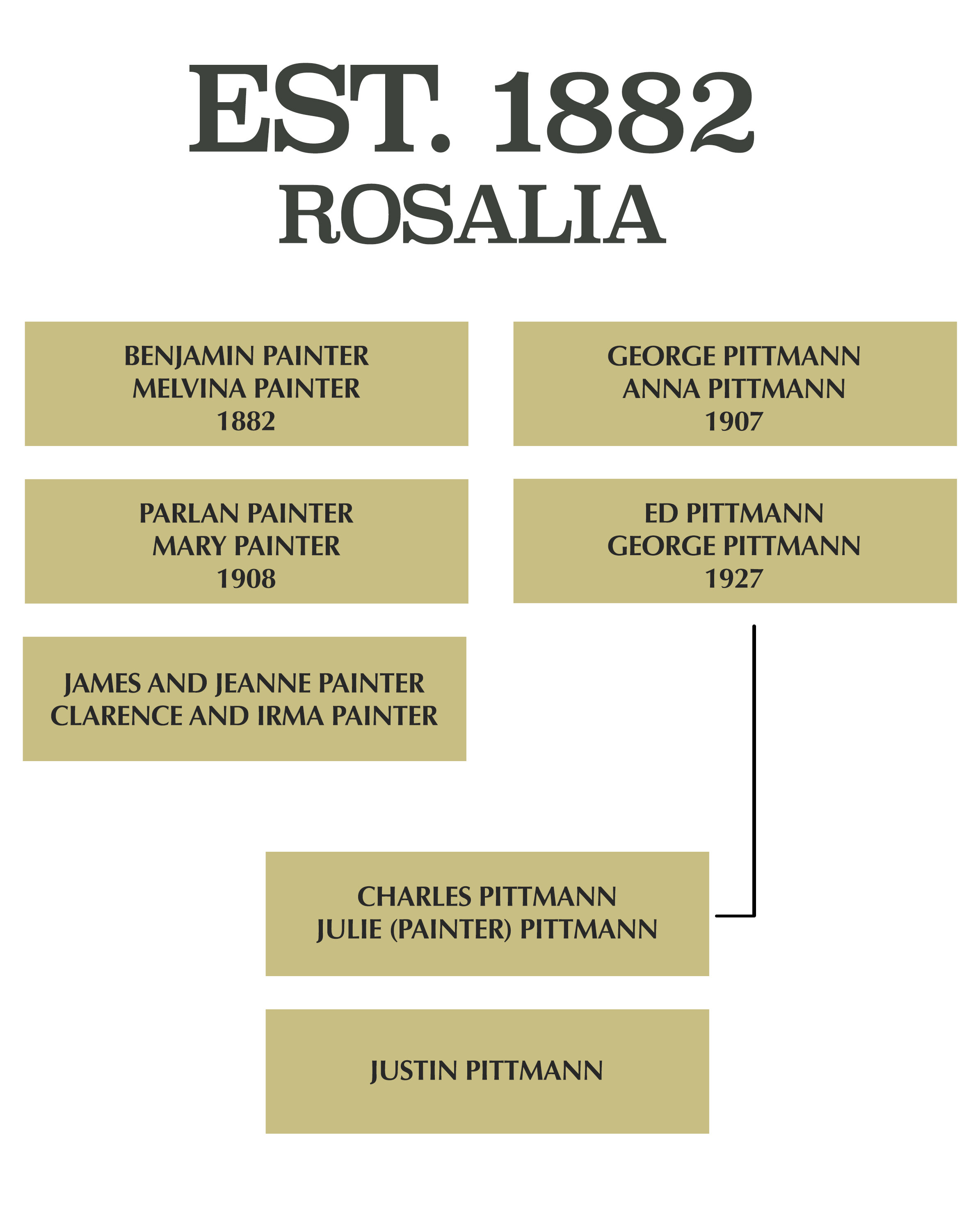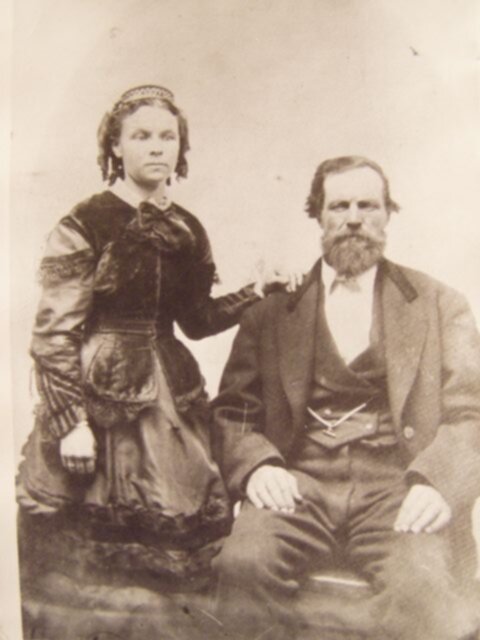Painter-Pittmann Farm
Painter- Pittmann Farms
Ben and Melvina Painter and sons look over land that is to be their new home south of Cheney. Painting by Nona Hengen © 2004.
Ben and Melvina Painter.
Parlan and Mary Painter.
James and Jeanne Painter.
Painter History:
The painter family arrived in the cheney area in 1882.
Originally from Ohio, Benjamin and Melvina Painter arrived in Washington with a wagon train from California. They had eight children - five of whom survived to adulthood. They purchased the original 160-acre homestead of David and Emma Bonney in 1882 for $12.50 an acre. The old Bonney cabin still stands on the property, and it is for that family that nearby Bonney Lake is named.
During that time, homesteaders had to grow a variety of crops to receive the land from the government, so the original farm had orchards, wheat, and other crops, along with a herd of cattle. Ben and his sons built a large Dutch gambrel barn, 36’x60’, which is still standing and used by their descendants to this day.
When Ben died in 1908, their son Parlan took over caring for the farm. Parlan and Mary Painter, who owned the property from 1908 to 1930, were active in the Buckeye community, so named because so many of the area’s settlers were from Ohio, with Mary overseeing Buckeye School eighth grade examinations and Parlan serving as township assessor, training his workhorses and even helping train cavalry horses for World War I. They had three children - Clarence, Eleanor, and James.
When the children were grown, they took over the running of the farm. Clarence married Irma Johnson, and James married Jeanne Terrell Darling. After years of farming together, Clarence moved his family to the Chewelah area and James took over the Painter homestead. During those mid-century years, James ushered the farm into the modern farming era: they brought electricity to the farm, bought tractors, and even had a combine with a 12-foot header.
James and Jeanne had two daughters - Janice and Julie. And when the girls met the Pittmann boys from Rosalia, they fell head-over-heels.
Pittmann History:
THE Pittmann FAMILY ARRIVED IN THE Rosalia AREA IN 1908.
Much like the Painter family, the Pittmanns had come to Washington from the midwest looking for space for their large family to spread out. George and Anna Pittmann and their nine children settled in the Rosalia area, eventually buying farm land in 1916. The two oldest sons, George Jr and Edward, took on much of the farming work, but each of the children was involved with running the farm .
Edward married Vena Henning, and they purchased the land directly next to his parent's farm, where they built a family home and a barn. After George Sr passed away, Edward took over managing the family farm.
Edward and Vena had three children - Charles, Steve, and Carol. In time, Charles met Julie Painter, and they were married. Not long after, his younger brother Steve married Julie’s older sister Janice.
Charles, Julie, Steve, and Janice farmed together for 48 years, managing both the Pittmann land and the Painter land. Charles and Julie had two children, Justin and Jessica, who have grown up on the farm and help manage it to this day.
The Pittmann barn.
Charles and Julie Pittmann and family.
Harvest on the Pittmann farm, with Steptoe Butte in the background.
Today:
Today, Charles, Julie and Justin manage much more than the original 160 acres. Both farms grow winter wheat, peas, lentils, and barley. The large barns on both the Pittmann farm and the Painter land have been registered as historic landmarks. The family is proud of its history.
biggest changes:
Julie says the biggest changes on the farm all seem to revolve around technology. “When I was little it would take a month to harvest. Dad had a little self-propelled combine with a 12-foot header. That was a BIG deal then - but today you see headers as big as 40-50 feet! Then years later the air-conditioned cabs came around and that was nice too. It would get so hot and dusty and to be able to sit inside a cab was a big deal and then to have it have A.C. was a real treat. I remember Dad talking about when they got electricity to the farm. He was little and his Mom was so excited. She had a handful of kitchen appliances all picked out, so the day she got the electricity she sent her husband into town to pick up the appliances.”
“The farm has anchored the whole family. It is home and a place they could always come back to. Even cousins and other family members who didn’t live on the farm or grow up near the farm call the farm “home” and will return almost yearly to visit or even use it as a landing place during hard times. That means a lot to know that they are part of this strong foundation - we’re all guardians of that foundation.”












